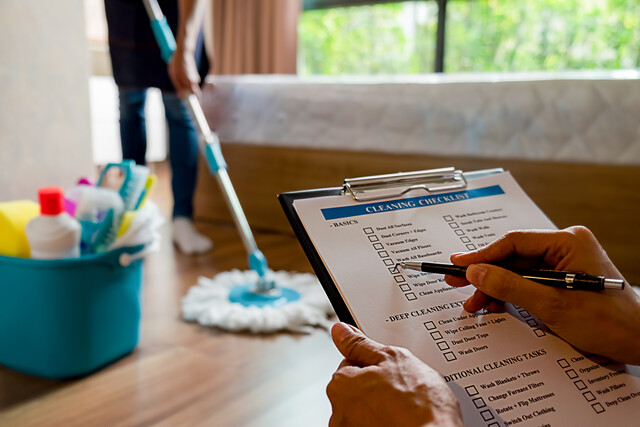Healthy Alternatives in Bread Making
Many people believe that it would be next to impossible to make a bread that does not contain gluten, let alone grains at all. It is possible to make a delicious loaf of bread that has neither gluten nor grains, you just have to get creative with your recipes.
Objectives:
1. Learn why some people choose to avoid gluten or grains.
2. Learn a little about grain and gluten alternatives.
3. Learn a few delicious recipes for gluten-free and grain-free breads.
Gluten and Gluten Sensitivity:
Gluten sensitivity, gluten intolerance, celiac disease, and gluten-free diets are all over these days � in the super market, on the news, and even people who always ate wheat are switching their habits. So what is gluten and why are people avoiding it? Gluten is the protein in wheat that gives it elasticity and contributes to its ability to rise. Many people have varying degrees of difficulty processing gluten due to responses in their immune systems which can escalate all the way to full-blown celiac disease. All of these conditions have similar symptoms relating to indigestion, irritable bowls, lethargy, depression, and a variety of stomach issues.
Grains and Why Some People Avoid Them:
There are other people who avoid grains all together and not necessarily because they have a particular condition, but because they believe that humans are ill-equip to process any grains. Humans only began eating grains roughly 10,000 years ago, which is very little time in the 2.5 million year span of human evolution. People who do not eat grains, including those who prescribe to the paleo and primal diets, theorize that grains lead to the vast majority of preventable diseases such as metabolic disorders, auto-immune disorders, mental disorders, diabetes, and heart disease. Grains contain large amounts of phytic acid which is known to inhibit the absorption of vitamins and minerals, and they may contribute to leaky gut which is associated with cancers and immune disorders.
Gluten-Free French Bread:
This is a delicious recipes for gluten-free French bread that is comparable with the original version. It has a nice, airy center and a crispy crust.
Following recipe makes 1 large loaf�
Ingredients:
1 cup of sorghum flour
1� cup of potato starch
� cup of tapioca starch or flour
1� teaspoon of salt
1 tablespoon of sugar
1 teaspoon of xanthan gum
1 teaspoon of guar gum (or another teaspoon xanthan gum)
1� tablespoons instant yeast or bread machine yeast
1 tablespoon of olive oil
3 large egg whites
1 teaspoon of cider vinegar
1 cup warm water (110 � 115�F)
Steps:
- In a large mixing bowl, combine sorghum flour, potato starch, tapioca starch, salt, sugar, xanthan gum, guar gum, and yeast. Mix until well incorporated.
- Add the olive oil and egg whites and mix to incorporate.
- Add the vinegar and most of the water. Beat for 2 minutes, adding the remaining water if needed to make a soft dough.
- Spoon the dough onto an aerated pan and carefully shape with a spatula. Because the dough is soft, it will go through the small holes in the pan. Don't press hard when shaping.
- If you like, you can brush the top with beaten egg white.
- Use a sharp knife to cut several slits in the top of each loaf.
- Place the pan in a cold oven on a middle rack. Turn the oven on to 425�F and bake for 30 � 35 minutes.
- Cool the loaves completely on a wire rack before slicing and serving.
Conclusion:
There are many reasons for going gluten-free or grain-free, and all of them personal to each unique individual. If you happen to be one of these people or know someone who is, then you can still make wonderful, hearty bread without sacrificing flavor.
Alternative Uses for Stale Breads
Many times, bread will go stale and be thrown out without a second thought to all of the wonderful recipes that are borne of stale breads. Some people will cut up their bread and sit it out on the counter for a day or two in order to make it stale just so that they can make one of these great recipes. Whether you have bread go stale on its own or you speed up the process a bit, there are many alternative uses for stale bread that are quick, easy, and delicious.
Objectives:
1. Learn about some of the uses for stale bread
Uses for Stale Bread:
To some, it can be surprising the amount of uses there are for stale bread. You can use stale bread for French Onion soup, to make breadcrumbs, souffl�s, bread pudding, bisques, meatloaf, stuffing, croutons, French toast and so much more. Before throwing away stale bread, you should always consider mixing it up with a few moist ingredients and making something utterly delicious.
Bread Crumbs:
Bread crumbs are an excellent option for day old bread because they have a variety of uses, from frying chicken to meatloaf. They can also be stored for up to 6 months as long as they are thoroughly cooled before storing, and they take very little time to make.
The best bread crumbs are made from bread that does not have too thick of a crust. If the bread you are working with is particularly crusty, then just trim off some of the excess crust before commencing with the recipe.
Following recipe makes roughly 3 cups of bread crumbs�
Ingredients:
1 lb (about 500 grams) of day old bread
2 tablespoons of dried thyme or oregano
2 tablespoons of dried basil or parsley
1 teaspoon of garlic powder
2 teaspoons of salt (or enough to suit your taste)
� teaspoon of ground black pepper (or enough to suit your taste)
Steps:
1. Preheat your oven to 300�F.
2. On a large cutting board, chop the day old bread into cubes and then transfer them to a food processor.
3. Pulse the food processor to achieve thick crumbs.
4. Spread the crumbs on a baking sheet (or two) and dry the coarse crumbs in the oven for 10 to 15 minutes. Stir the crumbs halfway through baking.
5. Allow the crumbs to cool completely.
6. When the crumbs are completely cooled, return them to the food processor with all of the seasonings. Pulse to finely grind the crumbs (to your desire consistency) and to mix in the seasonings.
7. Make sure the crumbs are completely cooled and dry before storing them in an airtight container. They should last up to 6 months.
Fantastic Bread Pudding:
Bread pudding is a favorite dessert in both the United States and Northern Europe because it so effectively uses ingredients already on hand: stale bread, eggs, milk and sugar primarily. There are many different variations, such as citrus and dried fruits, but the most typical and popular is simple bread pudding seasoned with raisins, vanilla and cinnamon.
Following recipe makes on 8in x 8in bread pudding�
Ingredients:
6 slices of day old bread
2 tablespoons of butter, melted
� a cup of raisins (optional but recommended)
4 eggs, beaten
2 cups of whole milk
� cup of granulated white sugar
1 teaspoon of ground cinnamon
1 teaspoon of pure vanilla extract
Steps:
1. Preheat your oven to 350�F.
2. Break day old bread into small cubes and lay into an 8in x 8in baking pan. If using raisins, sprinkle them on top.
3. In a medium mixing bowl, whisk together eggs, milk, sugar, cinnamon and vanilla. Pour this over the bread and raisins. Push down lightly with a fork until bread is covered and soaking up the egg mixture.
4. Bake in your preheated oven until the top springs back when lightly tapped (about 45 minutes).
Conclusion:
There are a multitude of uses for stale bread which our ancestors used for generations in order to make bread last. They are ways to fully rejuvenate and reinvent an old loaf of bread that are sometimes even better than the original loaf. If you are ever looking at a stale loaf of bread, never throw it away! There is always something that can be done to make the old new again the stale delicious again.

























